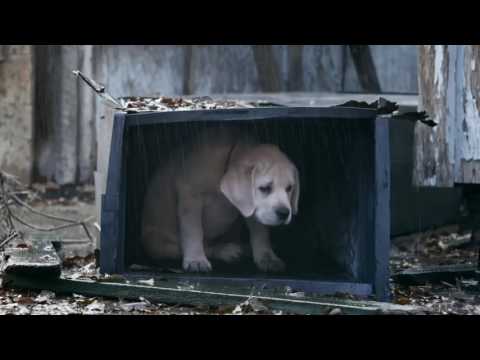Emotional Mounting: Story & Structure
“Lost Dog” is the heartfelt sequel to Budweiser’s 2014 hit, “Puppy Love.” It opens on a serene ranch setting where a golden Labrador puppy, approximately 11 to 12.5 weeks old, forms a bond with a Clydesdale horse and its trainer. Viewers immediately sense the warm companionship between the pup and its “#BestBuds.”
The narrative takes a dramatic turn when the pup becomes separated and embarks on a perilous journey—tangled in traffic, lost in a dingy barn, and ultimately left vulnerable in the rain beneath a crude shelter.
Amid mounting tension, the puppy faces imminent danger: an encounter with a hungry wolf. His frightened whimpers set the emotional tone ablaze.
In a deeply resonant turn, the Clydesdales sense their companion’s peril, charging to his aid and bringing the story full circle—with reunion, relief, and tenderness.
Crafting the Emotional Arc
Budweiser uses pathos masterfully, appealing directly to viewers’ emotions. The rescue scene, especially, tugs at the heartstrings with its themes of loyalty and friendship.
This narrative follows a Shakespearean five-act structure, enriching its emotional impact and memorability over conventional one-act TV ads. As marketing experts suggest, such storytelling yields stronger viewer recall and favorability.
Responding to the emotional tease:
“There is nothing quite like a sad story with a happy ending”
“When the puppy goes missing … the audience … understands the hurt that the farmer feels.”
Behind the Scenes & Production Highlights
-
Eight young Labrador puppies (seven females, one male) were used during production to ensure smooth filming.
-
Seven Budweiser Clydesdales trained for three months for their role.
-
The shoot took place at a ranch near Santa Barbara, California.
-
It was directed by Jake Scott and set to Sleeping At Last’s acoustic rendition of “I’m Gonna Be (500 Miles)”—formerly by The Proclaimers—adding to the emotional tone
Don Jeanes returned as the trainer-figure for the third time, deepening the campaign’s continuity and resonance.
Impact & Recognition
-
The ad quickly became the most shared commercial from Super Bowl XLIX, gaining widespread acclaim and countless views.
-
It also topped the USA Today Ad Meter, maintaining Budweiser’s legacy of emotional, high-scoring Super Bowl ads.
-
Further cementing its prestige, “Lost Dog” received a nomination at the Primetime Emmy Awards for Outstanding Commercial.
Why It Resonates
1. Universal themes: Loneliness, fear, friendship, and homecoming—these motifs cut across demographics, making it relatable to nearly anyone with a connection to pets or loved ones.
2. Emotional authenticity: Production choices—real animals, genuine reactions, evocative music—all combine to make viewers feel rather than just watch.
3. Narrative sophistication: By following classic storytelling arcs, Budweiser elevated a 60-second spot to a mini-filmic experience.
4. Integrated campaign strategy: Teasers, social media buzz with the hashtag #BestBuds, and pre-game promotions—all aligned to build anticipation and emotional investment long before the big moment.
Final Thoughts
Budweiser’s “Lost Dog” is not just another Super Bowl commercial—it’s a masterpiece of branding and storytelling. With a compelling emotional journey, seamless production, and strategic marketing, it struck the perfect balance between heart and hype. It’s no surprise that long after the game aired, fans continue to search for it, share it, and remember it. Budweiser reminded the world that friendship—no matter the size—truly lasts.
